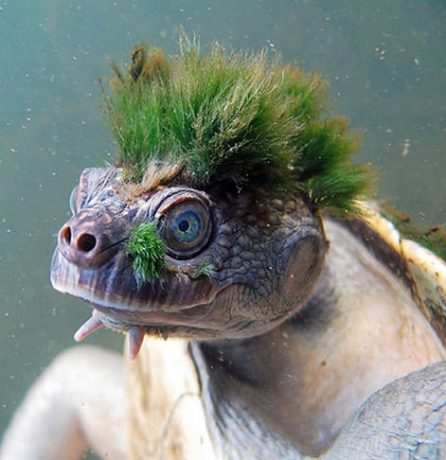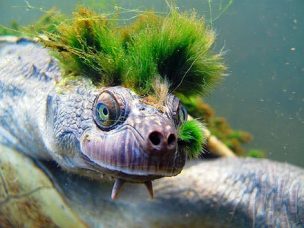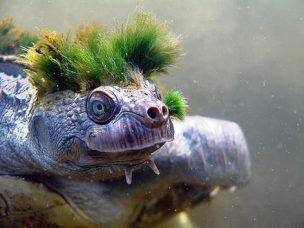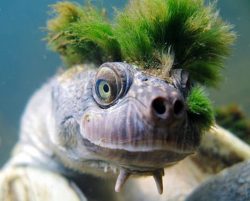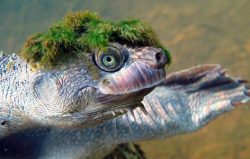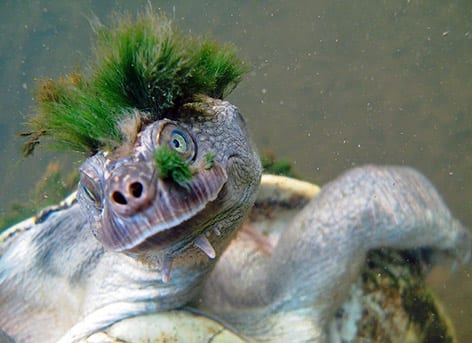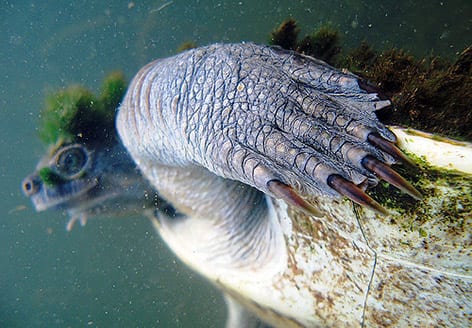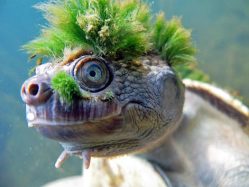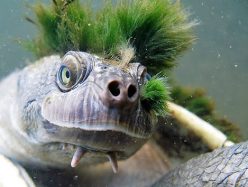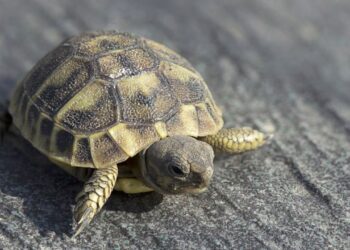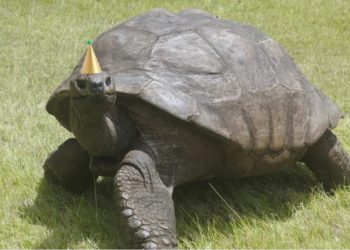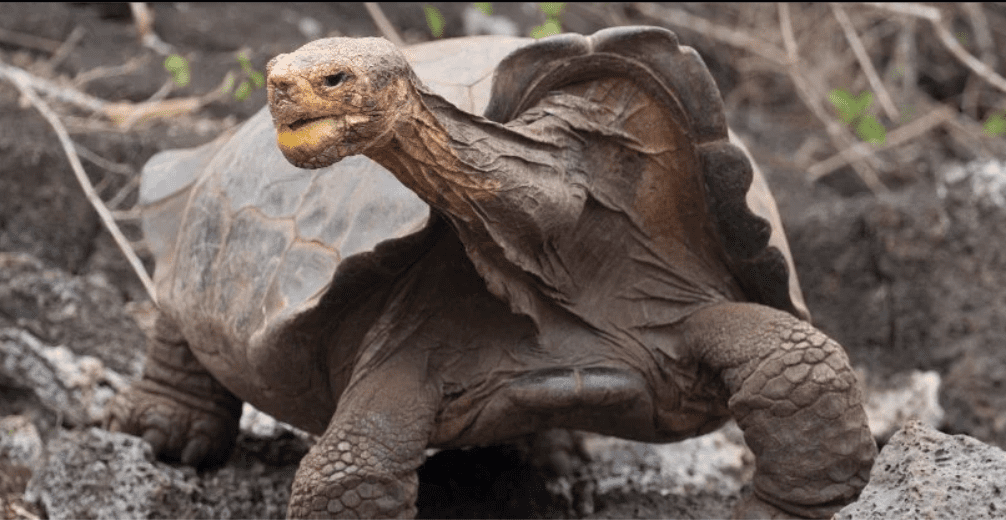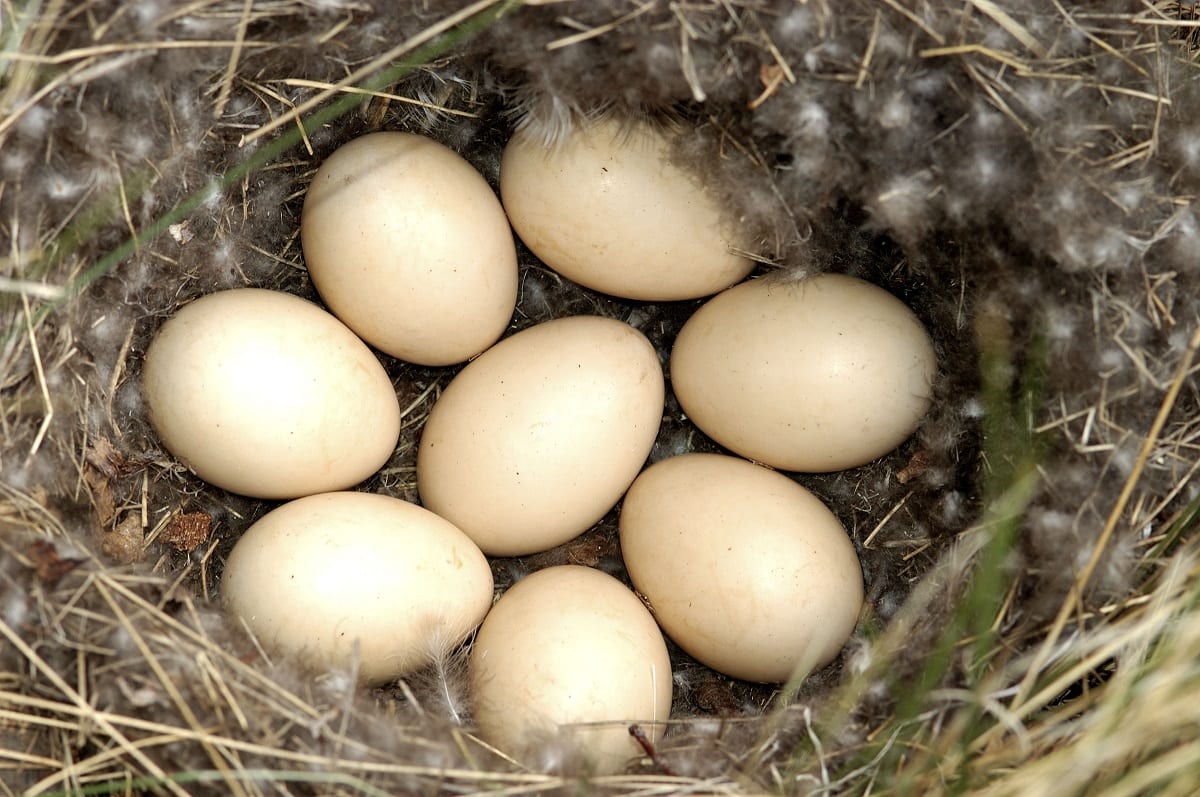Tartaruga punk
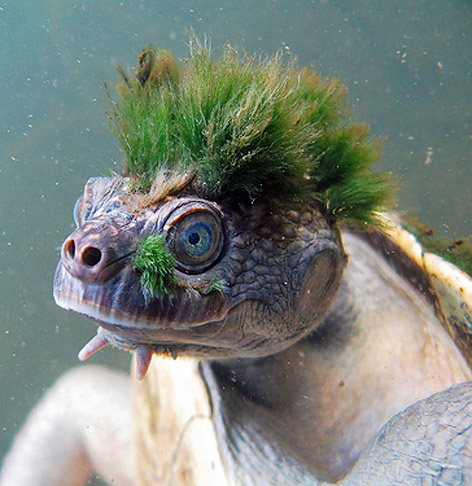
L’Elusor macrurus meglio conosciuta come Mary river turtle, prende il nome appunto dal mary river Australiano, che pare sia il suo habitat prediletto, ed è una rara specie di testugine riconosciuta come in via d’estinzione.
Piuttosto però che con questi “paroloni” è possibile googlarla digitando semplicemente: Punk turtle ovviamente riferito alla sua “capigliatura” eccentrica e di color smeraldo, di cui è facile (avendo in mente qualche reminescenza Darwiniana) intuire il motivo, l’elusor, comunemente alle sue simili facenti parte della famiglia delle Chelidae( e alle tartarughe a guscio morbido per ben intuibili motivi) ha l’abitudine di passare il 90% del tempo sul fondale, tali testugini quindi, voraci o meno non vantano un indole troppo guerrigliera, stando sulla difensiva, e a tal fine funge perfettamente la sua peluria nel mascherarsi fra le alghe.
Per i non rettilofili (salutone a Eagle) comunque, tale stravaganza non è l’unico pregio di tale tartaruga, che ha dalla sua rari tratti quali: occhioni azzurri, una coda pari a 2/3 del corpo (calcolando che una tartaruga dalla coda comune può vantare un arnese di dimensioni pari quasi alla sua lunghezza, dovrebbe essere una sorta di John Holmes a guscio duro) e come molte sue simili, la possibilità di arrivare tranquillamente al mezzo metro di diametro (ci state facendo il pensiero dite la verità ;-) )
Nello spoiler parte dell’articolo che potete trovare su wiki
[spoiler]
The Mary River Turtle, Elusor macrurus, is an endangered short-necked turtle that inhabits the Mary River in South-East Queensland, Australia. In the 1960s and 1970’s, they were popular as pets in Australia, with about 15,000 sent to shops every year during a ten year period. They were originally known as the “Penny Turtle”[1] or “Pet Shop Turtle”. Hatchlings have a SCL (Straight Carapace Length) of between 2-3.5 cm.
Elusor it is a monotypic genus representing a very old lineage of turtles that has all but disappeared from the evolutionary history of Australia. It is one of Australia’s largest species of turtles. Specimens in excess of 50 cm carapace length have been recorded. Adult Mary River turtles have an elongated, streamlined carapace that can be plain in colour or beautifully patterned. Overall colour can vary from rusty red to brown and almost black. The plastron varies from cream to pale pink. The skin colouration is similar to that of the shell and often has salmon pink present on the tail and limbs. The iris can be pale blue. Mary River Turtles use bimodal respiration, and are therefore capable of absorbing oxygen via the cloaca whilst underwater. However, they do regularly come to the surface to breathe air in the usual way.
A unique feature of Male Mary River turtles’ is the tail, which can measure almost two thirds of the carapace length. The tail has haemal arches, a feature lost in all other modern turtles. It is probably a derived feature but its function is not understood. Another unique feature is the exceptionally long barbels under the mandible. Proportionately, the Mary River turtle has the smallest head and largest hind feet of all the species within the catchment, which contributes to its distinction of being the fastest swimmer.
[/spoiler]
Gallery napsterata qui
P.S: le mie son comunque più belle!

